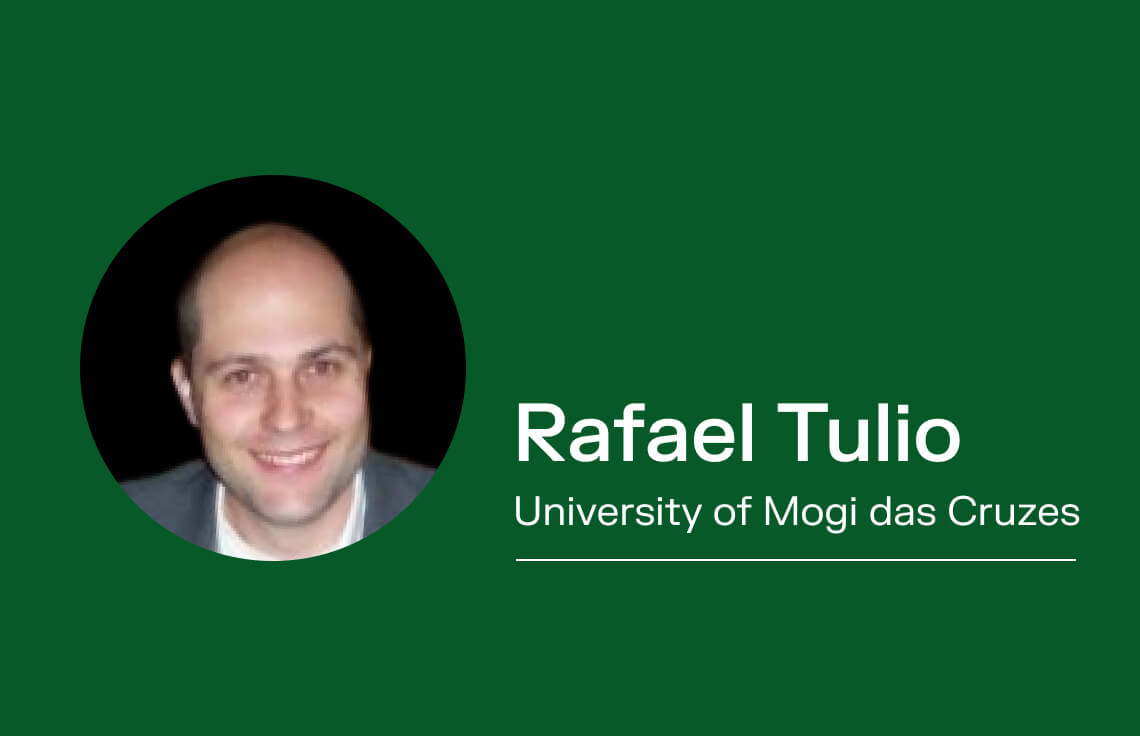There is a global education gap that needs to be reduced. This statement refers not merely to the differing levels of access to education across different nations but to the technology needed to boost digital education.
The COVID-19 pandemic accelerated demand for distance learning which has meant that a huge number of technology providers have seen rapid growth in demand over the past two years.
For instance, in 2020, American EdTech companies alone raised $1.45 billion in investment. In other large markets such as China, the demand has exploded, with more than 423 million new online education users as of March 2020. It is no surprise that by 2025, the yearly investments in the EdTech sector are expected to rise to $8 trillion globally.
Megadeals are here to stay
In 2021, the Edtech sector reported 332 deals. Among the megadeals, India’s Byju acquired Singapore-based Great Learning, augmented reality startup Whodat, Toppr, and Akash educational services.
This year, the US cloud computing provider Blackbaud acquired EverFi, an education technology company, for $750 million, and most recently, a potential 2U deal was announced by Bloomberg worth 1 Billion USD.
As deals increase in both volume and value, investors, educators, and governments struggle to ensure the learning offered in institutions all over the globe meets the expectations of students and parents.
How can we reduce or eliminate the gap in the education sector with the help of private investors?
In his opening statement, Gabriel Amaral said, “currently, there is a huge gap between the financial amount invested in educational projects and the effective learning students achieve. “It is time to make the amounts invested converge into quality for all levels of education,” affirmed Rafael Tullio, who has extensive experience in the sector, having worked in groups such as Laureate and SEB. Rafael also believes that investors are interested in a range of products, from primary and medical education to post-graduation courses.
Education is the ball that investors need to catch. It is on my radar and the radar of many other traditional investors. The challenge is to develop this area to enable business growth and meet the labor market’s demands.
Rafael Tulio
CFO, University of Mogi das Cruzes
In which segments of education are there the most investments?
The global education technology market was valued at USD106.46 billion in 2021 and is predicted to expand by 16.5% by 2025. The K-12 segment led the market, accounting for over 40% of global revenue, and the preschool segment is expected to register the fastest growth up to 2030.
Since digital content is usually easier and cheaper to produce, there is a shift to using eBooks that can be accessed online, in different languages, and with accessibility features, such as an audio format. The goal of enhancing student engagement has led to the introduction of interactive whiteboards and touchscreen displays. Technology facilitates the collection of assessment data like App-based learning with videos and curated content aimed at younger learners. Earlier this year, Creative Labs provided virtual reality headsets for a Senior Secondary School in India.
The higher education segment has been consolidating through the acquisitions made by large brands such as Grupo Anima, Kroton, Anhanguera, and Yduqs, among others. “But the speed of acquisitions is dropping not only because of economic and political issues, but because now the focus is on universities that offer courses in the health sector and those with better profit margins. However, they are not that numerous because of the MEC restrictions on the number of vacancies,” commented Rafael.
There is strong demand in the healthcare market for qualified professionals in all spheres, from the clinical (doctors, nurses, technicians, and assistants) to the administrative, with the development of specialized managers in the sector who know their reality and have the required knowledge to act strategically. “Groups like Laureate, for example, saw this some time ago and made an effective contribution to the training and specialization of professionals in the healthcare sector,” says Rafael.
What is the role of the so-called K-12 education?
K-12 education, which goes from kindergarten to high school, is a sector that is also arousing considerable interest among huge players. For instance, there is only one large group in Brazil – SEB, which owns a mere 2% of the market. Rafael believes that
This year, K2 education will come to the boil because it is perceived as a segment with a lower average ticket, but with a large volume of transactions. K-12 has a lot of scope for professionalization and improvements that would benefit more than 43 million students, adding the public and private area – in which there are about 9 million software providers, spread over 40,000 schools.
Rafael Tulio
Gabriel pointed out that the size of the Brazilian education market, with more than 50 million students (equivalent to almost the entire population of Canada), is very attractive to foreign investors. He believes the future of K-12 depends on the appetite of those who want to invest in education since there are investment options with a wide range of tickets (from R$ 900.00 to R$ 3,000.00 monthly fees).
Rafael agrees: “But one certainty is its attractiveness. This is why I believe there will be a flurry of purchases in K-12, with a significant reduction in the number of neighborhood schools. The most significant will be the investment in bilingual teaching, not just as a second language, but incorporating it into students’ day-to-day lives.”
What else is needed for the sector to evolve and attract new investments?
We must develop the workforce, managers, teachers, and support professionals, combining educational culture, socioeconomic aspects, and mergers and acquisitions. “The challenge is to accelerate business and considerably improve the quality of education offered today, which needs to be more appropriate for the modern world, including bilingualism. Private investment in education means improvement and better alternatives for quality education for society as a whole,” insists Rafael.
What are the new demands of the market and of society regarding the quality of education?
There is a clear need to understand the quality of education for the new student. Students today are clearly more digitally savvy and highly engaged in socio-environmental issues. “Companies in general, especially those in the education market, need to make an effort to understand the new students’ profile, recognizing how they see the world, and how it is possible to contribute strategically in the classroom, granting them an improved learning experience, and allowing them to apply their knowledge in the corporate market,” explained Gabriel .
“Higher education and K-12 education are undergoing a very important culture change, which places greater emphasis on the importance of soft skills so that learning is more effective, with students learning competencies and skills to deal with the content taught so they can put it into practice in real life,” explained Luiz Magalhães.
According to him, mostly small and medium-sized traditional schools are now changing to survive because their sponsors are aging, and many lack the capacity to modernize their businesses to meet these new social expectations. “This is because the new reality requires adopting new educational technologies and continual intensive training, especially for teachers. Today, professional staff already account for 60% of the fixed costs of institutions, which means they need to find other funding sources,” argued Luiz.
In addition to their culture and practices, institutions also need to polish their administrative processes and communication with the market to explain their differentials and how they can effectively contribute to society. Luiz insists that “Schools have to motivate students to enhance their knowledge and their future. During the pandemic, there was a great acceleration of this process, with hybrid teaching and distance education, which needs to continue from now on.”
The problem is that some schools are returning to the traditional approach, where the teacher speaks, and the student listens, without promoting discussion, interaction, or reflection and the effective application of knowledge. “What worked for the parents will not necessarily work for the children, who are living a new reality,” reflected Luiz. The education market needs to understand this so they can modernize and ensure its survival in the medium and long term.
Only those institutions that really have a good philosophy and an ingrained methodology will be successful because the market value of a school is totally linked to its educational value. I think another aspect to consider is that the large groups that have bought higher education institutions have cut costs by centralizing administration, which has been beneficial for the institutions’ bottom line, and this process should be repeated in mergers and acquisitions of K-12 schools.
Gabriel Amaral
VP of M&A, Itau BBA
Given this context, how important are Edtechs as supporters of digital education?
Digital education is a trend, and Edtech is the tool for it to happen. This is because it is fundamental to use technology in education today to access children, teenagers, and young people living in a digital age. “We are going through a process of cultural development of digital education. But the generation from 10 to 25 years old is already ready to learn digitally. For now, we still need a hybrid education, digital and face-to-face, to teach older students, but the digitalization of education is an irreversible process,” believes Rafael.
Laís Rume added that children need to learn from an early age to use screens safely and with awareness supported by family and school. “Parents see the need for new skills and abilities, but they don’t always know how to demand this from schools because it’s always easier to stick with conventional standards. Today, the important thing is not to be content-based, but to know how to develop students for self-learning and meet the market’s needs.”
For this reason, Edtechs have been gaining more and more space. They emerged intending to consolidate education with business management. “We want to improve the use of children’s new mindset (awareness), integrating all stakeholders – students, parents, teachers, and the corporate market,” explained Lais. According to her, this includes promoting everything from communication between teachers and parents in kindergarten to offering augmented reality solutions for medical or engineering courses.
“Students today cannot learn by just sitting and receiving knowledge without interacting with it or putting it into practice. For this reason, it is essential to use technologies such as Artificial Intelligence (AI), for example, to help enhance learning,” explains Lais. For this reason, private initiative investments in the sector are not just welcome. They are essential, because investors can make financial contributions and have a broader view of the landscape, considering the quality of education and the market demands.
Lais believes that “Large groups can and will shorten the path for entrepreneurs which can benefit even neighborhood schools.” But these benefits should not only be reaped by private institutions. The public network can and should promote and accelerate the results of this evolution, as this has already been proven possible by initiatives in Portugal. “Here in Brazil, there are already conversations with education secretaries, who see the Edtechs and tools such as YouTube as important support points for the improvement of teaching,” concludes Lais.
What else is needed for technology to become a real strategic tool for education in the country?
Before public schools can evolve, they need to consider their paradigms and prejudices. Lais says, “Schools and teachers are afraid that technology will replace them, but the applications and tools exist as facilitators to help them continue disseminating knowledge when students are at home. This is because students today are ready to think and seek knowledge independently. They will do this anyway.” For Magalhães, the alliance of education and technology is essential because we are in a digital age.
We already have startups developing language intelligence programs from early childhood. AI can follow the child’s development until adulthood, providing a personalized education. We must take advantage of this potential and extend it to as many students as possible in the coming years.
Luiz Magalhães
Director, Instituto SEB
The education sector needs to modernize to meet society’s expectations, and investors are betting on Edtechs and software companies with innovative and modern management; the challenge is improving ethos and methodologies to offer quality education.
There are good examples of schools offering quality education and have invested in modernizing their administration and academic management while providing quality bilingual education. However, there is still a long way to go to make this practice common to the market as a whole.
Only with a quality education that combines technology, knowledge, and incentives for self-learning will we develop people who are better prepared for life, having the right skill set to meet the needs and expectations of the job market.






